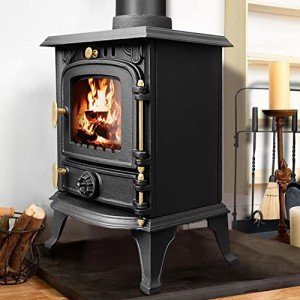10 No-Fuss Methods For Figuring Out Your Multi Fuel Fires

Understanding Multi-Fuel Fires: A Comprehensive Guide
Multi-fuel fires are ending up being significantly popular amongst homeowners searching for efficient and versatile heating options. These systems offer the flexibility of burning multiple types of fuel, such as wood, coal, or biomass, which can result in cost savings, environmental benefits, and enhanced benefit. In this post, we dive into the numerous elements of multi-fuel fires, including their advantages, types, upkeep requirements, and regularly asked concerns.
What is a Multi-Fuel Fire?
A multi-fuel fire is a heating unit that can burn different kinds of fuel. This versatility permits property owners to pick the most cost-effective or accessible fuel source at any given time. Normally, multi-fuel fireplaces and stoves are developed to burn both solid fuels (wood and coal) and, in some instances, liquid fuels, providing a useful solution for a series of heating needs.
Advantages of Multi-Fuel Fires
When thinking about a multi-fuel fire, homeowners can take pleasure in numerous advantages, including:
- Versatility: Ability to pick from various fuel sources depending upon accessibility and rate.
- Cost-Effectiveness: Potential to minimize heating expenses by making use of less expensive fuel choices.
- Sustainability: Option to utilize renewable resource sources, such as wood pellets, which can lower carbon footprints.
- Increased Heating Efficiency: Many multi-fuel stoves are developed to be highly effective, drawing out optimum heat from the fuel.
- Aesthetic Appeal: Multi-fuel fireplaces provide a relaxing ambiance, making them attractive focal points in a home.
Below is a table summing up the key benefits of multi-fuel fires:
| Benefit | Description |
|---|---|
| Adaptability | Ability to burn several fuel types |
| Cost-Effectiveness | Possible savings by selecting lower-cost fuels |
| Sustainability | Use of sustainable sources like wood pellets |
| Heating Efficiency | High-efficiency designs for much better heat output |
| Aesthetic Appeal | Boosted visual warmth and ambiance in living spaces |
Types of Multi-Fuel Fires
Multi-fuel fires can be available in different styles and kinds. Understanding the different types can assist house owners make informed decisions. A few of the typical types include:
1. Multi-Fuel Stoves
- Features: These are standalone units capable of burning numerous kinds of solid fuel and are designed for high performance.
- Best For: Homes without existing chimneys that require portable heating.
2. Multi-Fuel Fireplaces
- Functions: Installed in a designated area in the home, these fireplaces can typically accommodate logs, coal, or pellets.
- Best For: Homeowners trying to find a captivating focal point in their living areas.
3. Multi-Fuel Boilers
- Features: Multi-fuel boilers are developed for heating water and typically run utilizing wood, oil, and coal.
- Best For: Homes needing main heating and warm water services.
4. Pellet Stoves
- Functions: Specifically developed to burn compressed wood pellets, they are normally automated and need less maintenance.
- Best For: Homeowners wanting a low-effort heating option that utilizes sustainable resources.
5. Mix Systems
- Functions: These systems are created to accept 2 or more types of fuels, permitting ultimate versatility.
- Best For: Users needing versatility based upon seasonal schedule and budget for fuel types.
Maintenance of Multi-Fuel Fires
To ensure optimal efficiency and longevity of a multi-fuel fire system, maintenance is crucial. Proper care consists of:
- Regular Cleaning: Remove ash and debris from the firebox and flue to preserve airflow and performance.
- Yearly Inspections: Hire an expert to check the chimney or flue for blockages or structural issues.
- Fuel Quality: Use high-quality, experienced fuels to minimize ash and boost heating performance.
- Weatherproofing: Ensure that external components do not affect the flue system by installing appropriate covers.
Regularly Asked Questions (FAQs)
1. Can I burn any kind of fuel in a multi-fuel stove?
Not all multi-fuel stoves are designed for every kind of fuel. Owners need to check the maker's guidelines for particular fuel compatibility to avoid damage or safety dangers.
2. Is using multi-fuel fires more eco-friendly?
Using sustainably sourced fuels, such as wood pellets, can certainly minimize your carbon footprint and is usually more environmentally friendly than nonrenewable fuel sources.
3. Just how much heat output can I get out of a multi-fuel fire?
Heat output might vary based on the design of the unit and the kind of fuel utilized. Multi Fuel Stove Small ought to follow the maker's requirements for possible heat outputs.
4. Do I need to set up a special flue for my multi-fuel fire?
A lot of multi-fuel systems require a particular flue type created to handle the emissions from the various fuel types burned. Consulting a professional during installation is recommended.
5. Are multi-fuel fires safe for indoor usage?
When installed correctly and kept, multi-fuel fires can be safe for indoor usage. Regular evaluations and adherence to security standards assist to mitigate threats.
Multi-fuel fires present an efficient and flexible heating solution for modern homes. With a range of alternatives offered, property owners can enjoy the benefits of versatility, cost-effectiveness, and visual appeal. Appropriate upkeep and understanding of the required cleaning and security treatments will make sure these systems supply years of reputable heating. As awareness and need for sustainable options grow, multi-fuel fires remain an appealing choice for eco-conscious customers seeking warmth without the environmental impact.

